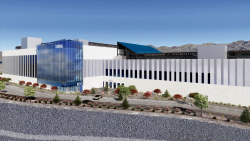In terms of air superiority, the F-35 Lightning II is virtually unparalleled in the skies.
The F-35 Lightning II is widely considered to be the top fighter jet in service today. From the platform’s advanced specs, stealth, capabilities, and versatility, the fifth-generation platform is unmatched in many arenas. While the US Air Force continues to make strides with its next-generation air dominance fighter (NGAD) program, the F-35 is certainly not being left behind. In fact, upgrades for the Lightning II are expected to be incorporated over the platform’s service life. Earlier this year, Honeywell announced that it had successfully demonstrated the ability to enhance the F-35’s current Power and Thermal Management System (PTMS). While the aircraft’s current cooling system is satisfactory, an upgraded version will be required down the line to support the Lightning II’s future avionics upgrades.
“Our PTMS achieving one million flight hours reinforces why Honeywell is best positioned to deploy extensive experience, resources and technical capabilities to meet current and future F-35 cooling capacity needs for American and allied warfighters,” said Matt Milas, president, defense and space, Honeywell Aerospace Technologies. “Honeywell’s PTMS is interwoven into the key systems of the F-35, and the schematics clearly show that it is the heart and circulatory system of the F-35. In addition to supplying cooling – which is its most basic function – the PTMS performs 13 other mission- and safety-critical aircraft functions that require extensive integration and software qualification.” An upgraded cooling system is just the latest upgrade to be incorporated into the F-35 down the line. Since the fifth-gen platform is expected to remain in service for decades to come, tweaking other aspects of the jet series has become necessary.
An Overview of the F-35 Lightning II
The Joint Strike Fighter (JSF) came to fruition based on the Defense Advanced Research Projects Agency’s Short Take-Off/Vertical Landing study. Lockheed Martin’s infamous Skunk Works team conceptualized the stealth fifth-generation jet that would ultimately become the Lightning II. Like its F-22 Raptor predecessor, the F-35 was built with a reduced radar cross-section coated in radar-absorbent materials to minimize the chance of detection. The jet is powered by a pair of F-135-PW-11 engines, which provide 40,000 pounds of maximum propulsion. With this power source, the JSF can reach speeds up to Mach 1.6 with a flight range of 1,200 nautical miles. In terms of armament power, the Lightning II is capable of carrying 4 Aim-120 AMRAAM missiles for air-to-air missions or a combination of four AIM-120/GBU-31 JDAM smart bombs for air-to-ground missions.
In terms of air superiority, the Lightning II is virtually unparalleled in the skies. China’s fifth-generation Chengdu J-20 is expected to field similar advanced capabilities, however, the platform has yet to be battle-tested. As the F-35 continues to be upgraded, the fifth-gen fighter will remain relevant even alongside the Air Force’s upcoming NGAD jet. According to Lockheed CEO Jim Taiclet, the Lightning II could even be optionally manned down the line.
About the Author: Maya Carlin
Maya Carlin, National Security Writer with The National Interest, is an analyst with the Center for Security Policy and a former Anna Sobol Levy Fellow at IDC Herzliya in Israel. She has by-lines in many publications, including The National Interest, Jerusalem Post, and Times of Israel. You can follow her on Twitter: @MayaCarlin. Carlin has over 1,000 articles published over the last several years on various defense issues.
Image: DVIDS.


















